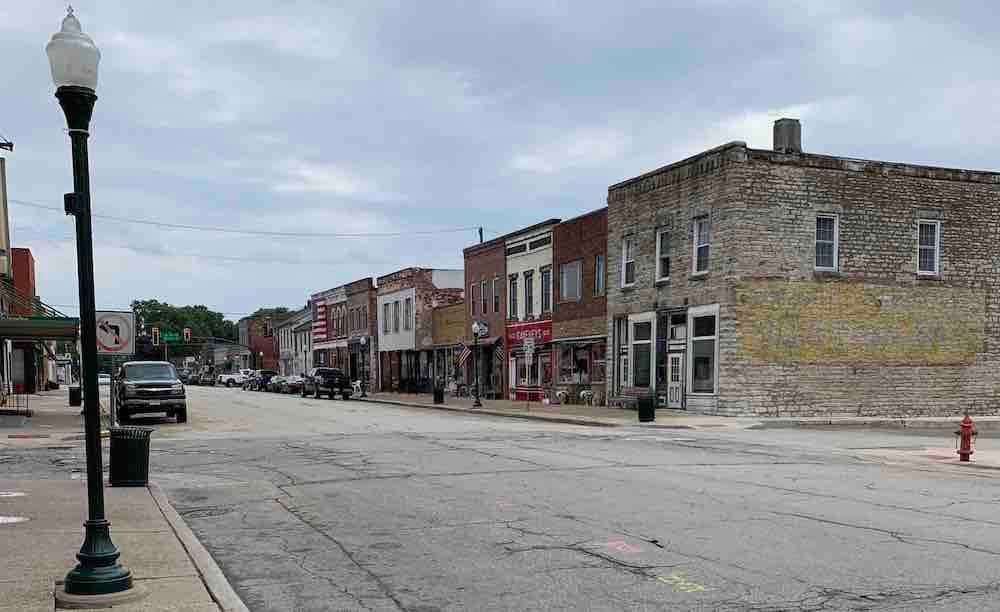Updated in October 2022
According to the HubSpot State of Inbound Marketing Report 2022, one of the top marketing challenges is still generating traffic and leads, with 27% of marketers of companies saying this will be their major challenge this year. So what do you do if your website is no longer getting traffic or generating leads?

As an Inbound Marketing, or Lead Generation agency, this comes as no surprise to us. Many of our enquiries are from people who tell us their website is no longer getting traffic. Sometimes their website has never had much traffic but often something has happened to make it stop working for them.
What's the Priority?
When we take on a project like this, we normally spend time analysing the current situation and looking at where the main issues lie so that we can decide which activities will have the most impact.
So, the first thing to look at is if you are getting enquiries from your website. Check out the means of getting in touch with you (phone, email, contact form, live chat) and find out how many people are contacting you through them. Also check if those numbers are going up or down over time. If those numbers are too low, or heading in the wrong direction, check out the number of visitors to your site every day/week/month. That way you can figure out if the lack of leads is due to low numbers of visitors or low conversion and tackle the root cause first. It varies considerably by industry, source and other factors but as a very rough rule of thumb, a 5% conversion rate of visitors to leads is around average.
Traffic Jam
Not always, but usually, you will find that a website needs more visitors. Until people find your site they can't engage with your business or buy anything from you. If you're not getting much traffic it's like being invisible. So you need to look at ways to make sure your site is found, and this starts with search engines. Luckily we have plenty of information about Search Engine Optimisation on our website, so you can read up on it if you like.

Investigate & Fix It
The first step is to look at the available data and find out what's going on. If you used to get visitors and they stopped very suddenly, it is likely that something obvious happened. If you are very lucky, it will be easy to fix. Here are some showstopping issues to investigate:
1. Did you recently get a new website?
If you redesigned your website, or moved to a new domain just before the decline started then it is probable that someone forgot to redirect the old urls and so Google doesn't know who you are any more. Either that or you totally rewrote the content and iit's not ranking as well as the old content.
How to fix it
If you're quick and Google is still ranking the old urls, you can still redirect them. The same goes for the old content - try adding it back into the pages.
2. Is it still being indexed?
Did you temporarily tell google to stop indexing your site while you changed something and then forget to change it back? It happens (more often than you'd think).
How to fix it
Check for no index tags and remove them!

3. Were you affected by a Google update?
Every now and again Google implements a major update to its algorithm which can have an adverse effect on your site. You may have heard of the Panda and Penguin updates to the Google algorithm which were designed to promote high quality content and downgrade sites that were using dodgy practices. If your site's decline coincided with one of these updates you can often figure out what it was in your site that upset Google and start fixing it. The latest update is called the Helpful Content Update, which, helpfully, more or less explains what it does!
How to fix it
Most of these updates are all about improving the quality of Google's search results, so make sure that your pages provide a really useful experience, providing the most relevant and helpful answers possible to the questions people are asking.
4. Mobile
Does your site work properly on a mobile device and does it provide a decent experience if someone visits it using mobile data? Google tends to check sites using a mobile first approach so even if your site is great on a desktop computer, it may be downgraded if it's a bit ropey on a phone.
How to fix it
Make sure your site is fully responsive, and if it's not, ask a web developer to make it responsive.

5. Site Speed
If your site loads very slowly it could have an effect on your rankings. Look at your competitors sites and if yours is loading more slowly than the sites at the top of the Search Engine Results pages, you may need to speed it up.
How to fix it
Check it in Page Speed Insights and you will see a list of diagnostics, advising you on the priorities.
6. SSL
Does your site url start with http? If so, your site is less secure than a site with SSL which will start with https. From an SEO viewpoint, Google sees it as a ranking factor and so if you want more traffic you need to move to https.
How to fix it
Purchase an SSL certificate (or ask your developer to do it).
Toxic Backlinks
Do you have dodgy links to your site that you or an SEO agency perhaps bought a few years ago when you thought it was a good idea? Unless the links to your site are relevant and from reputable sites, at best they won't help you and, at worst, they may hurt you.
How to fix it
Use a link checking service to see if you have any damaging links, then try to get any toxic links removed or disavow them.
What Next?
Once you are confident that these basic issues are all sorted out, from there the key is creating plenty of useful content on your site. Armed with some keyword research and buyer personas, you can create an effective content plan to boost your site's authority - and make it more visible - in order to attract more traffic.
Social Whirl
Alongside great content, using social media to attract attention can be a great way to drive visitors to your site. Content marketing takes time, but you can hurry things along with an active social media presence on those networks that your potential customers use.
If you're getting impatient, pay-per-click advertising like Google Adwords or Facebook ads can speed up the process too.

How Much is Enough?
We will also gain a thorough understanding of your business to find out how many leads you actually need, and how many visitors you need in order to get them. While it's not an exact science, our lead generation calculator is a good place to start. With a few basic numbers you can discover how many enquiries your website has to generate to help you hit your sales targets.
Wot, No Leads?
If you've got reasonable levels of traffic but still no leads, there's work to be done on your website itself to find out why it's not engaging your visitors and converting them into leads. Use your analytics to figure out how visitors are using your site, where the heaviest traffic is, which pages do and don't work. And remember to pay attention to those buyer personas we mentioned earlier. Then start making changes to capture the attention of your visitors, based on the type of information they need. Try an inbound marketing approach - offering something relevant and valuable in exchange for their contact details - and experiment as much as possible to find what is going to be most effective.
Regardless of how great your website is, you are always likely to want more visitors and more leads if you want to grow your business. There is no magic wand, but if you figure out where the main problem is, and try following some common sense steps, you are likely to start moving in the right direction.


